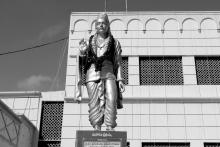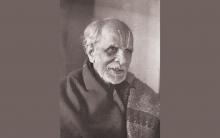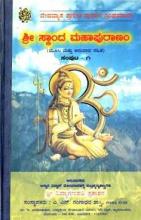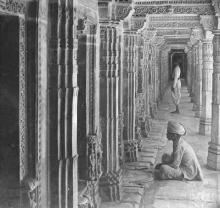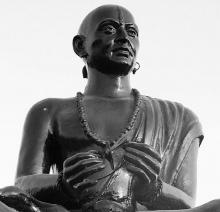Art appreciation begins with learned connoisseurs. Gaining breadth and vision with time, it develops into a well-structured system of aesthetics. Poets and artists often find it hard to explain the aspects of appeal inherent in the form and substance of their compositions. They have neither the bent of mind nor the competence to subject their work’s appeal to a logical analysis. Only a handful of artists can tell us what goes into the making of a charming composition and unravel the secret of its attraction.
Author:prekshaa
Powerhouse of Genius
Sarma received awards for many of his Sanskrit and Telugu works. Śrī Mahīśūra-rājyābhyudayādarśaḥ, his classical poetry composition about the progress of Mysore, was awarded the first prize. Those verses are delightful to hear. In his eyes, Karnataka was a land of enjoyment in all seasons[1] and this kingdom of Mysore could only be enjoyed by fortunate people.[2]
Ciradātṛ-rāja
There lived a king named Ciradātā in a city called Cirapura. Though the king was a nice person by his nature, he was surrounded by evil men. Prasaṅga and his friends who had come to the service of the king from a distant land did not get any remuneration, though they served him for five long years. Even if they wanted to see the king, they never got a chance to do so.
Subrahmanya Shastry seemed to have had quite a long relationship with the Skānda-mahā-purāṇa. This was probably the earliest of the works he had taken up. He had started working on a prose rendition of the Skānda-mahāpurāṇa running to twelve volumes back in 1928. In the edition thus published, the original text was not given and only the translation was given in the form of running prose. He has dedicated the work to his father, Moṭagānahaḻḻi Śaṅkara-śāstri.[1]
naranahudu hariyumahuda-
ccariyahudu rahasyamahudu rasikanaliptaṃ।
pariṇata-laukikanumahudu
paripūrṇa-manuṣya-jīvanōjjvala-mukuraṃ॥
He is human and also Hari,
He is wonderful, a secret, a rasika who is unattached,
He is an expert too in the matters of the world
He (Kṛṣṇa) is the glowing mirror to a complete human life.
ಇಂತಿದ್ದರೂ ಶಂಕರ-ಆನಂದವರ್ಧನರು ತಮ್ಮ ಕಾಲವನ್ನಷ್ಟೇ ಅಲ್ಲ, ಎಲ್ಲ ಕಾಲವನ್ನೂ ಮೀರಿ ನಿಲ್ಲಬಲ್ಲ ಸತ್ತ್ವವನ್ನು ಹೊಂದಿದ್ದಾರೆ. ಅವರ ವಿಚಾರಗಳನ್ನು ರೂಪಮಾತ್ರದಿಂದ ಅಳೆಯುವುದು ಅವರಿಗೆ ಮಾತ್ರವಲ್ಲ, ನಮಗೂ ಮಾಡಿಕೊಳ್ಳುವ ಅನ್ಯಾಯ; ಜ್ಞಾನಜಗತ್ತಿಗೇ ಮಾಡುವ ಅನ್ಯಾಯ. ಅಭಿವ್ಯಕ್ತಿಯ ಜಟಿಲತೆಯಿಂದ, ಉದಾಹರಣೆಗಳ ಅಸುಂದರತೆಯಿಂದ, ವಾದೋಪಯೋಗಿಯಾದ ನ್ಯಾಯ-ದೃಷ್ಟಾಂತಗಳ ಏಕದೇಶೀಯತೆಯಿಂದ ಅವರ ತತ್ತ್ವಕ್ಕೆ ಯಾವುದೇ ಕೊರತೆಯಾಗಿಲ್ಲ. ಈ ಅಂಶಗಳನ್ನು ನಾವು ಅವರಿಗಿಂತ ಚೆನ್ನಾಗಿ ಆ ಪರಂಪರೆಯಿಂದಲೋ ನಮ್ಮ ಪರಿಸರದಿಂದಲೋ ತುಂಬಿಕೊಳ್ಳಬಹುದು. ಇದು ಕಷ್ಟದ ಸಂಗತಿಯೇನಲ್ಲ. ಆದರೆ ಅವರು ಕಾಣಿಸಿದ ತತ್ತ್ವವನ್ನು ಮಾತ್ರ ಯಾರೇ ಆಗಲಿ ತಾವಾಗಿ ಸಾಕ್ಷಾತ್ಕರಿಸಿಕೊಳ್ಳುವುದು ಅಸಾಧ್ಯವೆಂಬಷ್ಟರ ಮಟ್ಟಿಗೆ ದುಷ್ಕರ.
ಕನ್ನಡರಾಜ್ಯೋತ್ಸವ ಬಂದೊಡನೆಯೇ ಕನ್ನಡವನ್ನು ಕುರಿತ ಚಿಂತನೆ ನಮ್ಮೆಲ್ಲರ ಮನಸ್ಸಿನ ಮೇಲ್ಪದರಕ್ಕೆ ಬರುವುದು ಅಚ್ಚರಿಯೇನಲ್ಲ. ಈ ಮೂಲಕ ಮೈದೋರುವ ವಿಚಾರ ಸಾರ್ವಕಾಲಿಕವಾದರೆ ಅದಕ್ಕಿಂತ ಒಳ್ಳೆಯ ಸಂಗತಿ ಮತ್ತಾವುದು? ಸದ್ಯದ ಈ ಬರೆಹ ಇಂಥ ಒಂದು ಮೂಲಭೂತಚಿಂತನೆಯನ್ನು ಆಸಕ್ತರೊಡನೆ ಹಂಚಿಕೊಳ್ಳುವ ಹವಣು.


